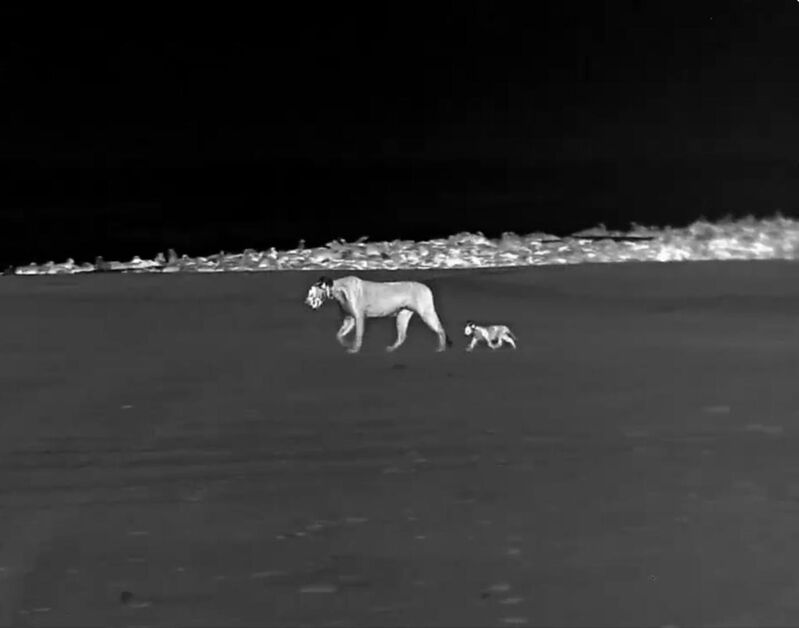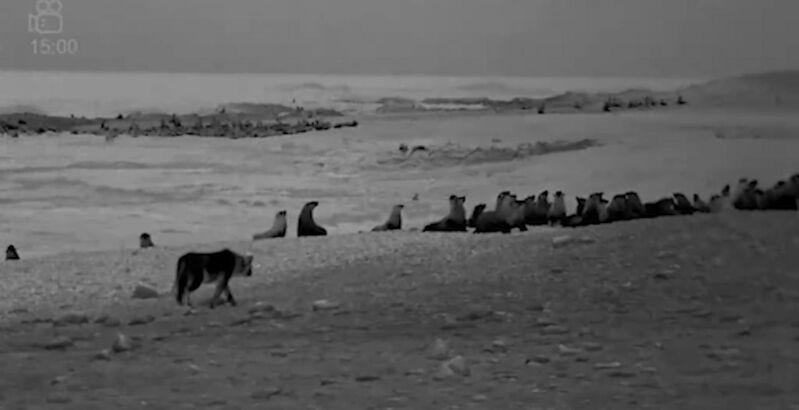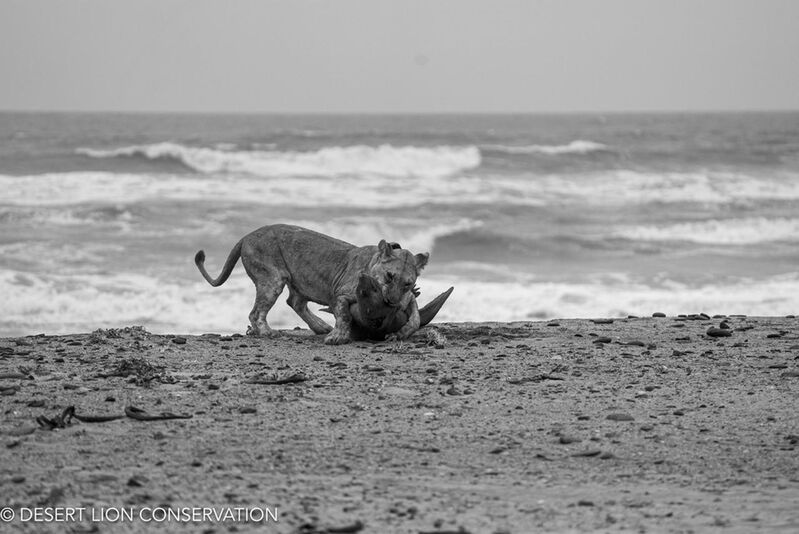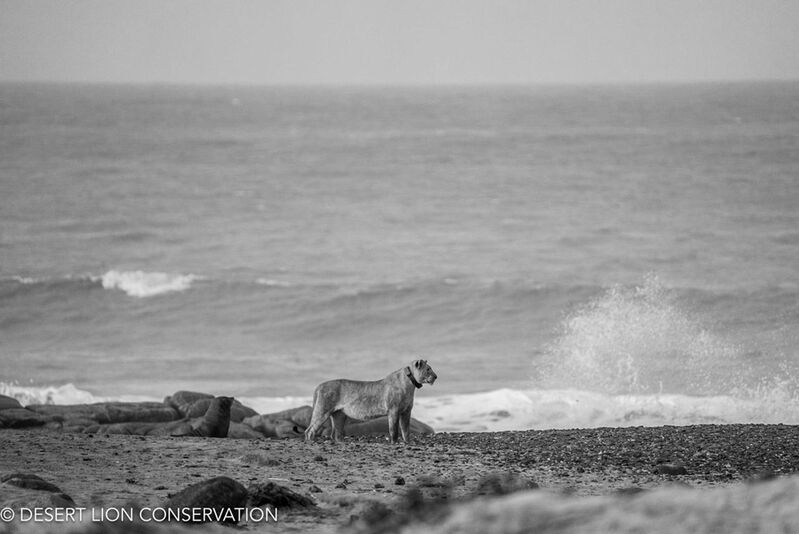15 May 2025 Update - Desert Lion news
Wednesday 14 May 2025
During November 2024 the Desert Lion Conservation Trust lost regular and reliable access to the internet. As a result, it was not possible to post regular and comprehensive updates on this website. Notwithstanding, the research and monitoring continued. The period between Nov 24 and May 25 was characterised by severe weather and hyper-arid conditions that were matched by unusual movement, behaviour and grouping patterns of the remaining lion population.
Torra Bay 2024/2025 Holiday Season
Similar to previous years (see NJE paper), the period between 1 Dec 2024 and 31 Jan 2025 was dedicated to monitoring lion movements along the coast and to prevent/mitigate potential conflict between lions and anglers. During the two-month period the Obab lioness Xpl-108 and the Orphan lionesses spent approximately 60% of their time along the coastal habitat. There were 14 incidents of interactions / potential conflict between lions and visitors. We succeeded in preventing or de-escalating conflict during all of these incidents.
Video 2: Cloud build-up during the 2025 seasonVideo 3: Unusual rains along the coastVideo 4: Humpback whale feeding at Mowe Bay
Return of Maritime lions in the Skeleton Coast National Park
Following the worsening aridity during recent years (2023-2025) that challenged the survival of all desert-adapted animals in the Northern Namib, lions expanded their movements with an increase in the coastal habitat. By April 2025 the two central Cape fur seal breeding colonies (Mowe Bay and Koigab) were discovered by lions. This marked an important development as lions realized the permanent nature of this food source.
 Lionesses Xpl-108 leads her male cub to the Koigab seal colony.
Lionesses Xpl-108 leads her male cub to the Koigab seal colony.

Xpl-151 discovers the Mowe Bay seal colony on 30 March 2025
These lions, collectively known as Maritime carnivores, play a crucial role in nutrient exchange between marine and terrestrial ecosystems, marking the first instance of a large African carnivore using marine prey.
 Xpl-109 captures large Cape fur seal.
Xpl-109 captures large Cape fur seal.
The unique feeding behaviour of Desert-adapted lions on marine species along the inter-tidal zones is exclusive to Namibia. This phenomenon, coupled with the extraordinary desert habitat of the Skeleton Coast National Park, holds immense value for Namibia’s tourism industry.
Key developments during 2024/2025
1. Interactions between the three “Orphans”: Xpl-106, Xpl-109 and their estranged sister, Xpl-114, became more frequent.
2. The young lioness, Xpl-151, reached the age of two and began venturing out on her own more often. On 10 October 2024, she spent the first day alone on the beach.

Xpl-151 moves along the beach south of the Hoanib River.
3. After raising Xpl-151, Xpl-106 entered her first oestrous cycle and moved eastwards along the Hoanib River.
4. Xpl-106 and Xpl-151 moved to the Hoaruseb River, where they encountered Xpl-150.
5. Xpl-143 found his way to the lower Hoaruseb River and united with Xpl-150. Both lions briefly visited the beach.
6. Xpl-106 copulated with OPL-24, leading to a conflict between Xpl-151 and the Xpl-114 group.
7. Xpl-114 accompanied Xpl-109 to the ocean, where they successfully hunted and consumed a seal. This marked Xpl-114’s first encounter with the marine environment and its food sources.
8. Both Xpl-114 and OPL-24 visited the coastline where Xpl-109 had killed a seal. This was OPL-24’s first experience with the marine habitat and its food.
9. Xpl-114 accompanied Xpl-109 to a hammock south of Auses Spring, where Xpl-109 gave birth to cubs late in November 2024.
10. Xpl-114 gave birth to cubs on the Floodplain a week later.
11. After a few weeks the Orphans moved to the ocean, but struggled to find seals along the coast south of the Hoanib.
12. The Orphans started moving further north of the Hoanib River and probe towards the large seal breeding colony at Möwe Bay.
13. Extensive rainfall and flooding of the ephemeral rivers, result in the dispersal of wildlife from the Hoanib River. In a desperate effort to feed her small cubs, Xpl-114 travels vast distances in search of food. She lost condition and eventually also her cubs.
14. On 29 March 2025, Xpl-109 introduced two male cubs, aged 4 weeks, to the world for the first time by leading them to a large seal carcass on the beach.
Video 5: Xpl-109 leads her small cubs to the ocean.

Rare sighting of small cubs on the beach.
Video 6: Xpl-109 and her small cubs moves inland after feeding on a seal.
15. On 30 March 2025, Xpl-151 entered the seal colony for the first time. During the following three nights she killed over 150 seals.
16. A week later Xpl-109 led the 2 male cubs onto the beach where they had killed a large seal on the southern edge of the colony.
17. This marks the second generation of lions growing up on the ocean with the culture as Maritime lions restored.
Video 9: Brown hyaena has a narrow escape.
